Now I've Seen Everything
Now I've seen everything
Solar System: Things to Know This Week
Making every night science movie night with these amazing videos.

1. Pure Beauty
Our star sprouting coronal loops courtesy of the NASA sun team. See the full video: https://go.nasa.gov/2p47Lt2

2. Where’s the last place you’d expect to find enough ice to bury a city?
Answer: Mercury, the closest planet to the sun. Watch the video: https://svs.gsfc.nasa.gov/11184

3. The Mars Fleet
Only Earth has more satellites studying it. Full video: https://svs.gsfc.nasa.gov/4414

4. A Star-Studded Cast
Check out NASA’s satellite fleet of Earth observers. See the video: https://svs.gsfc.nasa.gov/12586

5. Jupiter in Ultra HD
Thanks, Hubble Space Telescope! See the video: https://svs.gsfc.nasa.gov/12021

6. A Tear Jerker
Our Cassini spacecraft starts her 4.5-month Grand Finale this week. Full video: https://saturn.jpl.nasa.gov/resources/7628

7. Faster Than the Speed of Sound
Winds on Neptune travel faster than the speed of sound. Full video: https://svs.gsfc.nasa.gov/11349

8. A Musical Number
This one features the planet Uranus doing pop and lock. Full video: https://youtu.be/CWuWoiHmXUs

9. Up Close and Personal
Thanks to our New Horizons mission, we’ve been able to get up close and with Pluto. Full video: https://svs.gsfc.nasa.gov/12080

10: The Treasure Trove
TRAPPIST-1 is a treasure trove of seven Earth-sized planets orbiting a distant star. Full video: https://www.jpl.nasa.gov/video/details.php?id=1459
Discover more lists of 10 things to know about our solar system HERE.
Make sure to follow us on Tumblr for your regular dose of space: http://nasa.tumblr.com
More Posts from Aliensteel23 and Others
“blatherin blatherskite!”

Gizmoduck is on the town! Love the Ducktales reboot, the designs, the production quality, and the AMAZING voice cast!!!
A tribute to every brave men and women who rise their lives for our free country.










RIP to all the Men and Women who gave their lives for us to be able to be “Free”
This is the beauty of space
Holiday Lights from the Universe
Although there are no seasons in space, some cosmic vistas invoke thoughts of a frosty winter landscape. Here are a few stellar images of holiday wonderlands from across the galaxy…

Located in our galaxy about 5,500 light years from Earth, this region is actually a “cluster of clusters,” containing at least three clusters of young stars, including many hot, massive, luminous stars.

The outstretched “wings” of this nebula looks like a soaring, celestial snow angel. Twin lobes of super-hot gas, glowing blue in this image, stretch outward from the central star. This hot gas creates the “wings” of our angel. A ring of dust and gas orbiting the star acts like a belt, clinching the expanding nebula into an “hourglass” shape.

At this time of year, holiday parties often include festive lights. When galaxies get together, they also may be surrounded by a spectacular light show. This pair of spiral galaxies has been caught in a grazing encounter. This region has hosted three supernova explosions in the past 15 years and has produced one of the most bountiful collections of super-bright X-ray lights known.

What do the following things have in common: a cone, the fur of a fox and a Christmas tree? Answer: they all occur in the constellation of the unicorn (Monoceros). Pictured as a star forming region, the complex jumble of cosmic gas and dust is about 2,700 light-years away.

Resembling festive lights on a holiday wreath, this Hubble Space Telescope image of a nearby spiral galaxy is an iconic reminder of the impending season. Bright knots of glowing gas light up the spiral arms, indicating a rich environment of star formation.

The Hubble Space Telescope captured two festive-looking nebulas, situated so as to appear as one. Intense radiation from the brilliant central stars is heating hydrogen in each of the nebulas, causing them to glow red…like a holiday light.
Make sure to follow us on Tumblr for your regular dose of space: http://nasa.tumblr.com
Amazing.
The Moon Just Photobombed NASA’s Solar Dynamics Observatory
On May 25, 2017, the moon photobombed one of our sun-watching satellites by passing directly between the satellite and the sun.

The Solar Dynamics Observatory, or SDO, orbits Earth and watches the sun nearly 24/7 — except when another body, like the moon, gets in the way. These lunar photobombs are called transits, the generic term for when any celestial body passes in front of another.
Transits are one way we detect distant worlds. When a planet in another star system passes in front of its host star, it blocks some of the star’s light so the star appears slightly dimmer. By monitoring changes in a star’s light over time, scientists can deduce the presence of a planet, and even determine what its atmosphere is like. This method has been used to discover thousands of planets, including the TRAPPIST-1 planets.

SDO sees lunar transits about twice a year, and this one lasted about an hour with the moon covering about 89 percent of the sun at the peak of its journey across the sun’s face.
When they’re seen from Earth, we call lunar transits by another name: eclipses.

Solar eclipses are just a special kind of transit where the moon blocks all or part of our view of the sun. Since SDO’s view of the sun was only partially blocked, it saw a partial eclipse. Later this year, on Aug. 21, a total eclipse will be observable from the ground: The moon will completely block the sun’s face in some parts of the US, creating a total solar eclipse on a 70-mile-wide stretch of land, called the path of totality, that runs from Oregon to South Carolina.
Throughout the rest of North America — and even in parts of South America, Africa, Europe and Asia — the moon will partially obscure the sun, creating a partial eclipse. SDO will also witness this partial eclipse.

Total solar eclipses are incredible, cosmic coincidences: The sun is about 400 times wider than the moon, but it also happens to be 400 times farther away, so the sun and moon appear to be the same size in our sky. This allows the moon to completely block the sun when they line up just right.

Within the path of totality, the moon completely obscures the sun’s bright face, revealing the comparatively faint corona — the sun’s pearly-white outer atmosphere.

It’s essential to observe eye safety during an eclipse. You must use proper eclipse glasses or an indirect viewing method when any part of the sun’s surface is exposed, whether during the partial phases of an eclipse, or just on a regular day. If you’re in the path of totality, you may look at the eclipse ONLY during the brief moments of totality.

A total solar eclipse is one of nature’s most awe-inspiring sights, so make your plans now for August 21! You’ll also be able to see the eclipse cross the country that day through the eyes of NASA – including views of the partial eclipse from SDO – on NASA TV and at nasa.gov.
Learn more about the August eclipse — including where, when, and how to safely see it — at eclipse2017.nasa.gov and follow along on Twitter @NASASun.
Beautiful gems.
What would a Bloodstone and a Hackmanite make? A Bloodstone and a blue cat's eye? The Hackmanite and the cat's eye? Please and thank you very kindly 🙂
For Bloodstone and Hackmanite, I would recommend:

Chalcedony

Color Change Garnet

Diaspore
For Bloodstone and Blue Cat’s Eye:

Dioptase

Chrysocolla

Amazonite
And for Hackmanite and Blue Cat’s Eye, I’d recommend:

Cat’s Eye Alexandrite

Purple Fluorite

Black Opal
I hope that helps~
- Mod Sapphire ❤
I Love ROBOTBOY!!!!

@deathbot5000 @glamourcoffee How dare you take this honor from me. >A>
We’re gonna fight!

Mysterious
Solar System: Things to Know This Week
Learn about the science of photonics to create space communications, get updates on Juno, mining data from Voyager for new discoveries and more.

1. Carried on a Beam of Light
One of our major priorities is to make space communications more efficient. While our communications systems have matured over the decades, they still use the same radio-frequency system developed in the earliest days of the agency. After more than 50 years, we’re investing in new ways to increase data rates while also finding more efficient communications systems. Photonics–generating, detecting and manipulating particles of light–may provide the solution.
+ See how it works

2. It’s No Joke: Two New Moons for the Seventh Planet
Voyager 2 spacecraft flew by Uranus 30 years ago, but researchers are still making discoveries using the data it gathered. A new study led by University of Idaho researchers suggests there could be two tiny, previously undiscovered moonlets orbiting near two of the planet’s rings.
+ Find out how they were discovered

3. Vortex of Mystery
As southern winter solstice approaches in the Saturn system, our Cassini spacecraft has revealed dramatic seasonal changes in the atmospheric temperature and composition of Saturn’s largest moon, Titan. Winter is taking a grip on Titan’s southern hemisphere, and a strong, whirling vortex has intensified in the upper atmosphere over the south pole.
+See more

4. The Spiders of Mars
Ten thousand volunteers viewing images of Martian south polar regions have helped identify targets for closer inspection, yielding new insights about seasonal slabs of frozen carbon dioxide and erosional features known as “spiders.” From the comfort of home, the volunteers have been exploring the surface of Mars by reviewing images from the Context Camera on our Mars Reconnaissance Orbiter and identifying certain types of seasonal terrains near Mars’ south pole.
+ Learn more and see how you can join in

5. Better Safe Than Sorry
On Oct. 18, when Juno’s onboard computer entered safe mode, early indications were a software performance monitor induced a reboot of the spacecraft’s onboard computer, turning off instruments and a few non-critical spacecraft components, and it confirmed the spacecraft was pointed toward the sun to ensure the solar arrays received power. On Oct. 24, the spacecraft left safe mode and has successfully completed a minor burn of its thruster engines in preparation for its next close flyby of Jupiter. The team is still investigating the cause of the reboot and assessing two main engine check valves. The burn, which lasted just over 31 minutes, changed Juno’s orbital velocity by about 5.8 mph (2.6 meters per second) and consumed about 8 pounds (3.6 kilograms) of propellant. Juno will perform its next science flyby of Jupiter on Dec. 11, with time of closest approach to the gas giant occurring at 12:03 p.m. EDT. The complete suite of Juno’s science instruments, as well as the JunoCam imager, will be collecting data during the upcoming flyby.
+ Get the details
Discover the full list of 10 things to know about our solar system this week HERE.
Make sure to follow us on Tumblr for your regular dose of space: http://nasa.tumblr.com
An amazing view of the cosmos.
What’s Up for November 2016
What’s Up for November: Venus at sunset, Jupiter at dawn, your last evening glimpse of Saturn until spring, and more meteors!

Through November 3, catch glimpses of a gibbous Venus, a crescent moon and ringed Saturn in the southwest sky just after sunset.

Wake up before sunrise every day this month to see Jupiter just above Spica, the brightest star in the constellation Virgo, shining in the east-southeast sky.
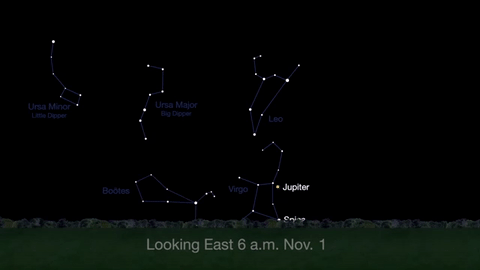
Just before dawn on November 23-24, see the waning crescent moon just above Jupiter.
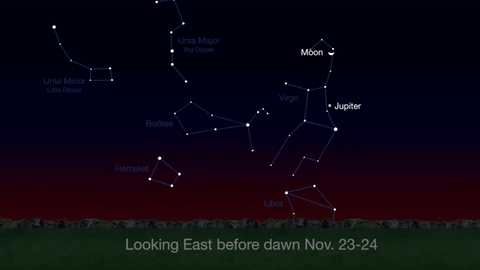
November is a great time to see the constellation Ceres as it glides past Cetus, the Whale and you will be able to see the dwarf planet move relative to the background stars, but you’ll need a telescope for this one.
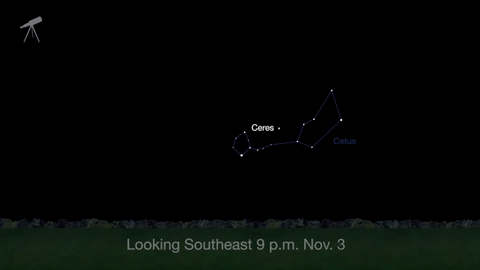
This month, just like last month, there will be three meteor showers–the Northern Tuarids, the Leonids and the November Orionids.
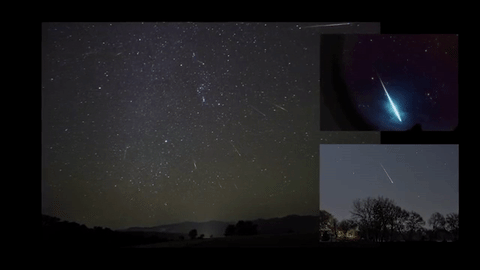
Watch the full November “What’s Up" video for more:
Make sure to follow us on Tumblr for your regular dose of space: http://nasa.tumblr.com.
You gotta love gem fusions.






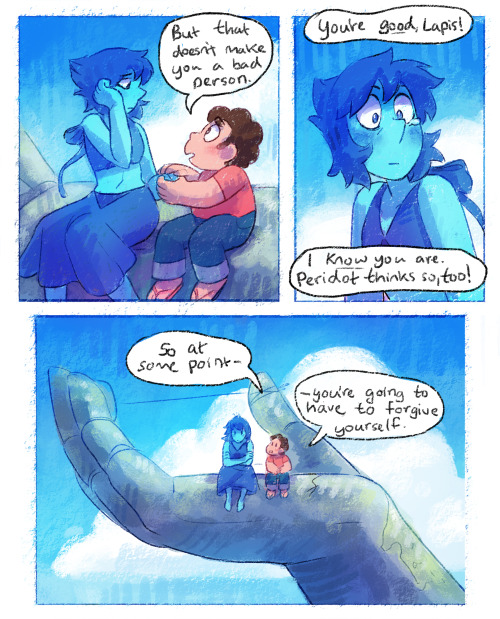




Chalcedony !
-
 cloudsurfer84 liked this · 1 year ago
cloudsurfer84 liked this · 1 year ago -
 luvbandit007 liked this · 2 years ago
luvbandit007 liked this · 2 years ago -
 bama4life reblogged this · 2 years ago
bama4life reblogged this · 2 years ago -
 bama4life liked this · 2 years ago
bama4life liked this · 2 years ago -
 appro880 reblogged this · 2 years ago
appro880 reblogged this · 2 years ago -
 fad6a5 liked this · 4 years ago
fad6a5 liked this · 4 years ago -
 ruinatlantis reblogged this · 4 years ago
ruinatlantis reblogged this · 4 years ago -
 ruinatlantis liked this · 4 years ago
ruinatlantis liked this · 4 years ago -
 m808vthetank liked this · 5 years ago
m808vthetank liked this · 5 years ago -
 ivysrebloggings reblogged this · 5 years ago
ivysrebloggings reblogged this · 5 years ago -
 somewhat-eternal liked this · 5 years ago
somewhat-eternal liked this · 5 years ago -
 yellowmagicalgirl reblogged this · 5 years ago
yellowmagicalgirl reblogged this · 5 years ago -
 imagesharer liked this · 5 years ago
imagesharer liked this · 5 years ago -
 violettabluee reblogged this · 5 years ago
violettabluee reblogged this · 5 years ago -
 nevadaoftheforest liked this · 5 years ago
nevadaoftheforest liked this · 5 years ago -
 sonicsoundscapes liked this · 6 years ago
sonicsoundscapes liked this · 6 years ago -
 worldart1 reblogged this · 6 years ago
worldart1 reblogged this · 6 years ago -
 about-mindmischief liked this · 6 years ago
about-mindmischief liked this · 6 years ago -
 radondom liked this · 6 years ago
radondom liked this · 6 years ago -
 supperlunary reblogged this · 6 years ago
supperlunary reblogged this · 6 years ago -
 appro880 reblogged this · 6 years ago
appro880 reblogged this · 6 years ago -
 jobryon liked this · 6 years ago
jobryon liked this · 6 years ago -
 marina880 liked this · 6 years ago
marina880 liked this · 6 years ago -
 c-n-dub liked this · 6 years ago
c-n-dub liked this · 6 years ago -
 isbbc liked this · 6 years ago
isbbc liked this · 6 years ago -
 naxal reblogged this · 6 years ago
naxal reblogged this · 6 years ago -
 normanijanehansen liked this · 6 years ago
normanijanehansen liked this · 6 years ago -
 momentfalife reblogged this · 6 years ago
momentfalife reblogged this · 6 years ago -
 rodyroco reblogged this · 6 years ago
rodyroco reblogged this · 6 years ago